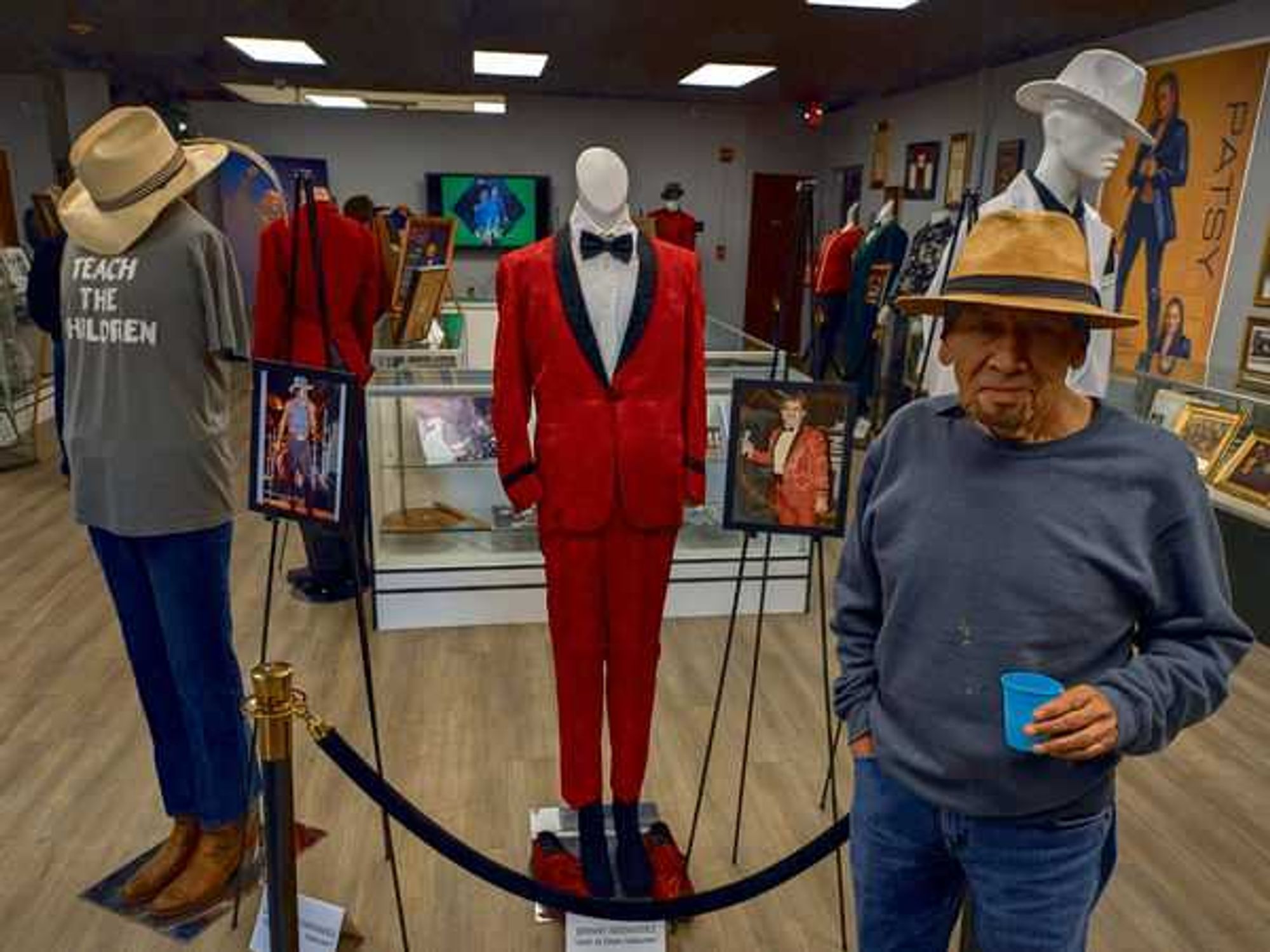Get goosed
Camping, cranes, culture: It must be Goose Island, a Rockport adventure
 Bayside camping is also available along the shore of Goose Island.Photo by Stephan Lorenz
Bayside camping is also available along the shore of Goose Island.Photo by Stephan Lorenz Sunrise at Goose Island State Park.Photo by Stephan Lorenz
Sunrise at Goose Island State Park.Photo by Stephan Lorenz A whooping crane family flies across St. Charles Bay. Less than 300 wild birdsmigrate annually from northern Canada to winter along the Texas coast, mainly inAransas National Wildlife Refuge near Goose Island State Park.Photo by Stephan Lorenz
A whooping crane family flies across St. Charles Bay. Less than 300 wild birdsmigrate annually from northern Canada to winter along the Texas coast, mainly inAransas National Wildlife Refuge near Goose Island State Park.Photo by Stephan Lorenz The Fulton Mansion offers a rare glimpse at Victorian life in Texas.Photo by Stephan Lorenz
The Fulton Mansion offers a rare glimpse at Victorian life in Texas.Photo by Stephan Lorenz Goose Island offer some of the best wildlife watching in Texas. Here, a pair ofAmerican Oystercatchers sets up shop near the fishing pier.Photo by Stephan Lorenz
Goose Island offer some of the best wildlife watching in Texas. Here, a pair ofAmerican Oystercatchers sets up shop near the fishing pier.Photo by Stephan Lorenz The Fulton Mansion has been restored and many antique pieces are on display.Photo by Stephan Lorenz
The Fulton Mansion has been restored and many antique pieces are on display.Photo by Stephan Lorenz A lighted fishing pier at Goose Island State Park offers 24-hour fishing.Photo by Stephan Lorenz
A lighted fishing pier at Goose Island State Park offers 24-hour fishing.Photo by Stephan Lorenz A campfire at Goose Island State Park with S’mores and the call of the coyote.Photo by Stephan Lorenz
A campfire at Goose Island State Park with S’mores and the call of the coyote.Photo by Stephan Lorenz Set amidst a dense forest of oaks, the campground at Goose Island State Parkoffers a chance for drive-up seclusion without having to leave the heavy coolerat home.Photo by Stephan Lorenz
Set amidst a dense forest of oaks, the campground at Goose Island State Parkoffers a chance for drive-up seclusion without having to leave the heavy coolerat home.Photo by Stephan Lorenz Having withstood more than 10 centuries, the State Champion Live Oak spans 35feet in diameter and is over 40 feet tall, offering plenty of shade on a sunnyday.Photo by Stephan Lorenz
Having withstood more than 10 centuries, the State Champion Live Oak spans 35feet in diameter and is over 40 feet tall, offering plenty of shade on a sunnyday.Photo by Stephan Lorenz The office at the Fulton Mansion.Photo by Stephan Lorenz
The office at the Fulton Mansion.Photo by Stephan Lorenz Another great spot for fishing, the pier stretches for a mile into Copano Bay.Photo by Stephan Lorenz
Another great spot for fishing, the pier stretches for a mile into Copano Bay.Photo by Stephan Lorenz
Goose Island, near Port Aransas in the Coastal Bend Region, offers some of the best camping, fishing and wildlife viewing in Texas.
Add interesting historical mansions and arts in the small two-town region of Rockport-Fulton, and there is plenty to keep busy during a long weekend — just a three-hour drive from Houston.
Outdoors go hand in hand with small town entertainment, and a delicious seafood dinner at one of several restaurants can easily be finished with s’mores around a campfire.
The tree of champions
Goose Island State Park harbors the namesake island, plus 300 acres of coastal live oak forest and prairie. The park offers over 100 RV and campsites, but these can fill up quickly during the high season, especially during the cooler months from fall through spring (so reservations are recommended).
But it rarely feels crowded here, especially within the primitive campsites, tucked among large live oaks. Thickets of greenery give each spot a sense of seclusion.
For anyone desiring ocean views, there are several sites located right along the waterfront on Goose Island itself. And it’s easy to lean back here and watch the sunsets reflect in the orange glow of the bluestem prairies.
A short nature trail starting at the campground offers an excellent hike at dawn as bird calls, sunlight and morning mist rise from the forest of live oaks and yaupon.
Quiet roads just outside the park boundary are ideal for bicycle rides that pass the “Big Tree." At 35 feet in diameter and a 90-foot crown spread, it is the State Champion Coastal Live Oak.
Technical lingo aside, it is one enormous mass of pulp believed to be over 1,000 years old. It’s a great place to contemplate time — or just relax.
To catch a fish
Fishing is one of the most popular activities at the park, and it’s possible to rent tackle from the main office for free.
It is best to cast a line from the 1,600-foot long lighted fishing pier, stretching along the mouth of St. Charles Bay. Even if the fish aren’t biting, the view of shimmering waters, dozens of pelican gliding past and warm Gulf breezes will compensate.
Just to the south of state park lies Copano Bay Fishing Pier, alongside the new causeway spanning Copano Bay. The 20-foot wide and 1.5-mile long pier served as the bridge for Highway 35, connecting the Lamar and Live Oak Peninsulas, from the 1930s through 1960s. With the middle drawbridge removed, it now offers a chance to fish the middle of Copano Bay without having to worry about seasickness.
The lighting makes for excellent night fishing, and you can catch seatrout, drum and flounder.
The pier is also great for a hands-free stroll any time of day.
Plenty of small fishing boats ply the waters of Copano, Mission and Aransas Bays. These estuaries harbor a rich ecosystem of coastal marshes and shallow protected coves, serving as shrimp nurseries — which, in turn, attract large numbers of fish.
Many outfitters in the area offer fishing charters, and it is easy to head out on a small boat to try your luck for a record redfish, speckled seatrout, flounder, black drum or just something above the size limit.
Where the wild things are
The rich ecosystem of wetlands, shorelines, swamps and woodlands support a huge diversity of wildlife.
The Aransas National Wildlife Refuge, just north of Goose Island, protects one of the rarest and most magnificent animals in all of North America. The whooping crane, at five-feet tall with a near eight-foot wingspan, is one the largest birds on the continent and one of the most endangered.
Currently, less than 300 wild birds make an annual migration from northern Canada to the Texas coast, where the flock spends the winter in the rich marshes of the Coastal Bend Region. Family groups stake out large territories and stalk the ponds and mudflats for crustaceans, mollusks, fish and reptiles.
St. Charles Bay, bordering Goose Island State Park, offers good chances to watch these stately birds methodically pull mollusks from the mud or rest in nearby pastures.
A pair of cranes flying above, giving their grating whoops, are unmistakable, and offer an unforgettable sight.
During the winter season, daily boat tours leave from Rockport, taking visitors deep into the heart of the Aransas National Wildlife Refuge. They get up close and personal with the cranes, one of the nation’s natural treasures.
Along with cranes, thousands of other water birds thrive in the bays and inland marshes. Even the disinterested city dweller will marvel as flocks of thousands of flying waterfowl wheel in pirouettes above the bays, or dozens of species of waders roost on oyster banks or spearfish the water.
Back on land, white-tailed deer meander into clearings during early mornings, and even a shy bobcat may walk along a road or trail.
Nights are often punctuated by a chorus of coyotes and the hoot of an owl.
CultureMap Rockport-Fulton?
After all this wildlife, muck and fish slime, it’s time for some culture!
Head into Rockport-Fulton and get lost in the historic Fulton mansion. Completed after three years of work in 1877, it has withstood several hurricanes, served as a restaurant, was nearly torn down to make room for a trailer park and was pretty much abandoned by the time Texas Parks and Wildlife assumed ownership in 1976.
Nowadays, daily tours offer an inside study of the architecture of this unique mansion and an intimate look at the Fulton family.
After achieving great success in the ranching and meatpacking industry of the 18th century, the Fultons built a mansion set amidst towering oaks within sight of Aransas Bay.
Naming their estate Oakhurst, the family lived there for 18 years in a Second French Empire architectural masterpiece, complete with indoor plumbing, floor heating and gas lighting in what was then rough cattle country.
Despite the incongruity, they lavishly decorated their home with furniture and antiques brought from the East Coast and more distant places. Today, eight rooms have been restored, including much of the original furniture and decorations, offering a glimpse of Victorian life in Texas.
So pack the tent, stack some firewood into the trunk, check your fishing rods and head down to Goose Island this spring before the heat of summer hits.

 The newly opened Totally Tejano Hall of Fame and Museum includes a growing collection of memorabilia. Photo by Edmond Ortiz
The newly opened Totally Tejano Hall of Fame and Museum includes a growing collection of memorabilia. Photo by Edmond Ortiz